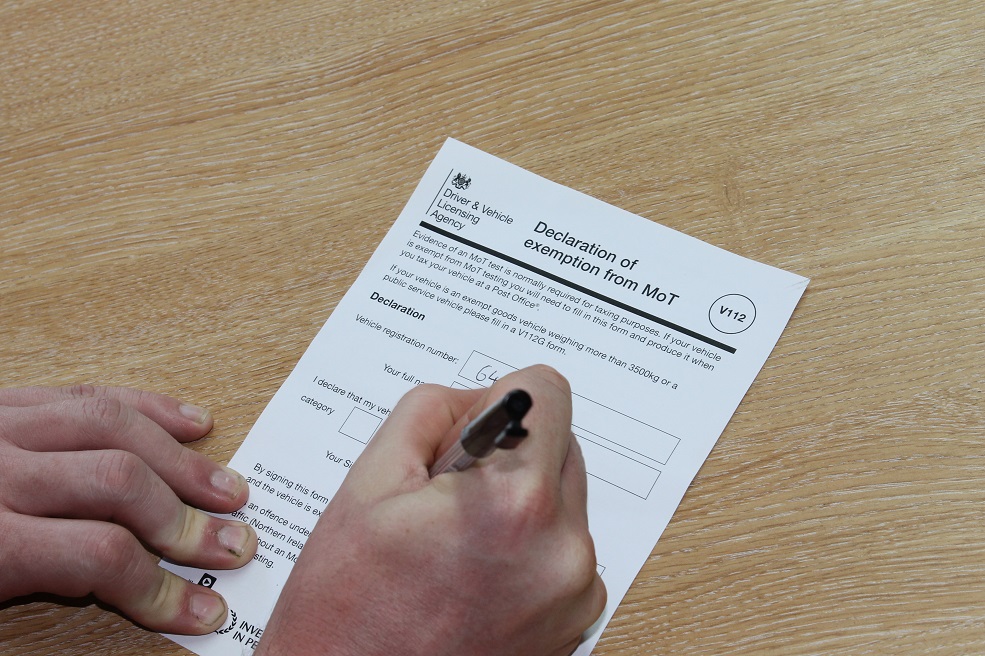The number of historic vehicles submitted for MoT tests has plummeted by more than half since the Government introduced an exemption from the test almost a year ago.
Figures obtained by Classic Car Buyer from the Driver and Vehicle Standards Agency (DVSA) show the number of classics eligible for Vehicle of Historic Interest status tested dropped by almost 54 per cent in the nine-month period following the law change on May 20, 2018. From this date, MoT exemption was brought into line with historic vehicle tax (VED), meaning vehicles built more than 40 years ago no longer need to be tested, providing no ‘substantial changes’ have been made in the last 30 years.
Between May 20 last year and February 19 2019, 81,613 vehicles over the age of 40 years were tested. The previous year’s figures were given over a whole year, running between May 20 2017 and May 19 2018, with 233,789 vehicles over the age of 40 years tested. If separated into equal 12-month intervals, that mean the number of vehicles tested over nine months works out pro-rata as 175,342. That’s nearly 94,000 fewer put in for a MoT test – a very significant drop, and a greater number than the amount actually tested.
Worked out in the same way, the amount of pre-1960 vehicles tested (which have been exempt since 2012) has also shown a drop, in this case around 15 per cent, but with only 6358 cars tested between May 20 last year and February 19, the comparatively small numbers involved make hard and fast conclusions harder to draw.
One year on
The rolling 40-year MoT exemption was introduced in spite of heavy opposition. The Department for Transport consulted with 2141 individuals, clubs, trade bodies and businesses before making its decision, and of those 899 were in favour of extending the exemptions, with a majority of 1130 opposed.
There are arguments in favour of the exemption. It means that a growing generation of testers not familiar with the quirks of older vehicles cannot then fail them erroneously, and that the modern MoT is no longer relevant to cars over 40 years old. Further justification for the changes was made on the belief that historic vehicles are generally well maintained and used mostly for short journeys, and the rules clearly state that you are still obligated to “keep the vehicle in a roadworthy condition.”
However, the lack of a mandatory test relies on a system of self-regulation, opening the door to unscrupulous folk who won’t think twice about driving a rot box, or those who aren’t mechanically savvy enough to understand what makes a car unroadworthy. Even well-intentioned owners may find themselves putting jobs off without an MoT test as a deadline to work to. Those who cover smaller mileages may feel their car only needs a MoT perhaps every two years, but with so many sub-standard and counterfeit parts on the market that don’t have the longevity of factory items, that could cause problems.

The significant reduction of vehicles being tested is especially worrying, as the MoT test is an inexpensive way of helping to ensure you haven’t missed a vital safety issue. At the very least it’s a basic annual check by a qualified mechanic, and may be the only inspection car gets.
An extreme case was hit the headlines last summer when Independent Rolls Royce and Bentley specialists Daniel Moore & Co published a pic online of a completely bald tyre from the 1960s it had discovered on a Bentley that had been presented for a simple oil change. Further inspection revealed the structure of the car was too far gone to ever be put back on the road, and yet the car was driven to the garage in the first instance.
That car would had almost certainly have been transported had it required an MoT test, but without any legal requirement, the danger is that more and more owners will try and save the transportation costs by changing their arm and driving the vehicle. Exemption has even become a selling point for classics, with countless online ads now making a reference to a car’s MoT test exempt status, and it’s often for vehicles needing restoration work.
Our freedom of info request also revealed that, out of almost 40m vehicles currently licenced as at September 30 2018, the total number of vehicles in the historic tax class was 464,765. So that leaves close on half a million vehicles that could be driving around without an annual inspection.
You could get a garage to inspect your vehicle to ensure it’s fit and safe, but that may not be as easy as it sounds. Speaking to various classic car owners, we’ve heard that many garages are unwilling to pronounce vehicles roadworthy due to liability issues with their insurance cover. This is something we’ll be looking into very soon.
Our recommendation, as it’s always been, is to voluntarily to submit your car for an annual MoT test or keep it roadworthy by some other method of inspection should you not possess the necessary skills yourself – preferably both. Just assuming everything is OK is certainly not the answer.







